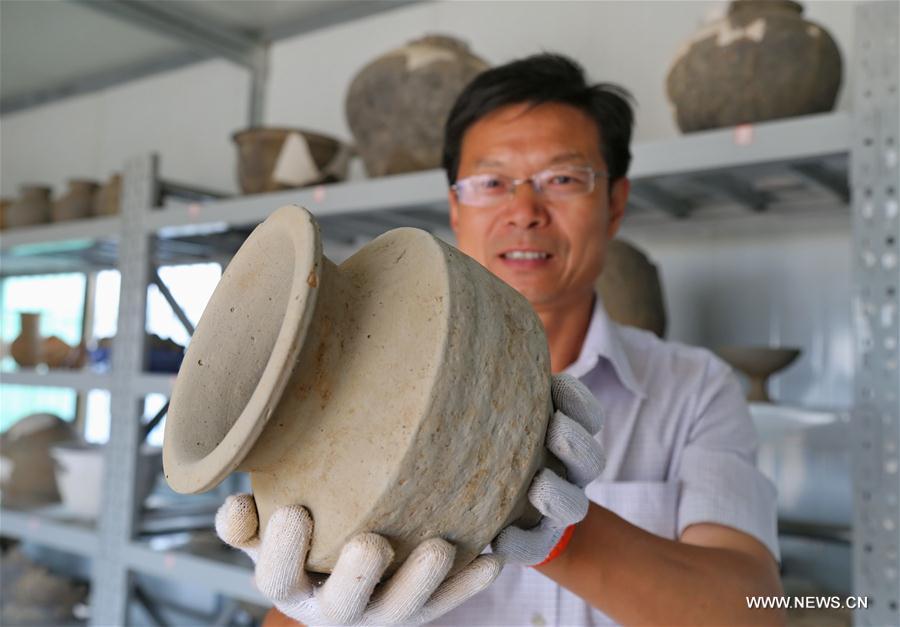Photo taken on June 12, 2017 shows an excavation of ancient tombs in Gujun village of Xingtang county, North China's Hebei province. The ancient tombs, believed to be built between the late Spring and Autumn Period (770 BC -476 BC) and the early Warring States Period (475 BC-221 BC), covers an area of 500,000 square meters. [Photo/Xinhua]
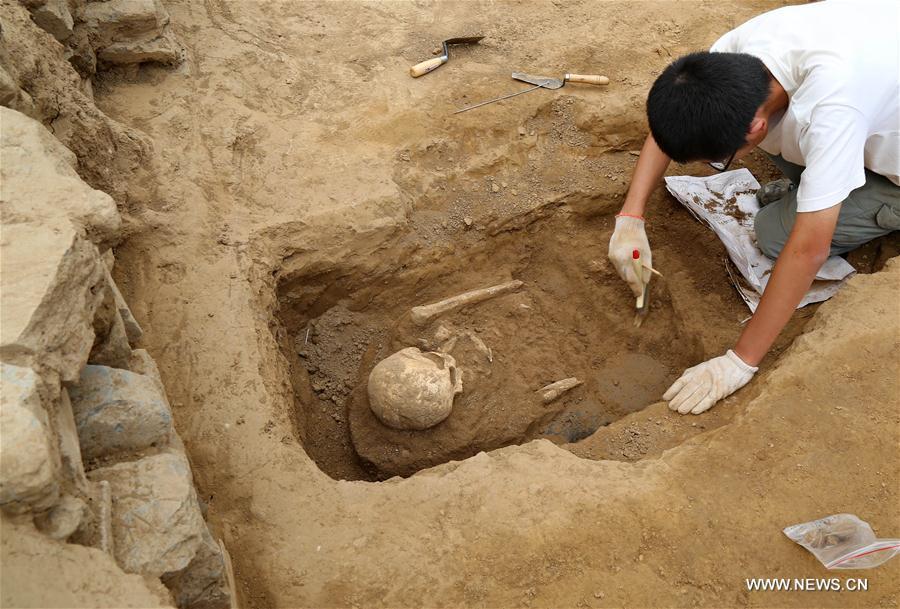 | An archaeologist works during an excavation of ancient tombs in Gujun village of Xingtang county, North China's Hebei province, June 12, 2017. The ancient tombs, believed to be built between the late Spring and Autumn Period (770 BC -476 BC) and the early Warring States Period (475 BC-221 BC), covers an area of 500,000 square meters. [Photo/Xinhua]
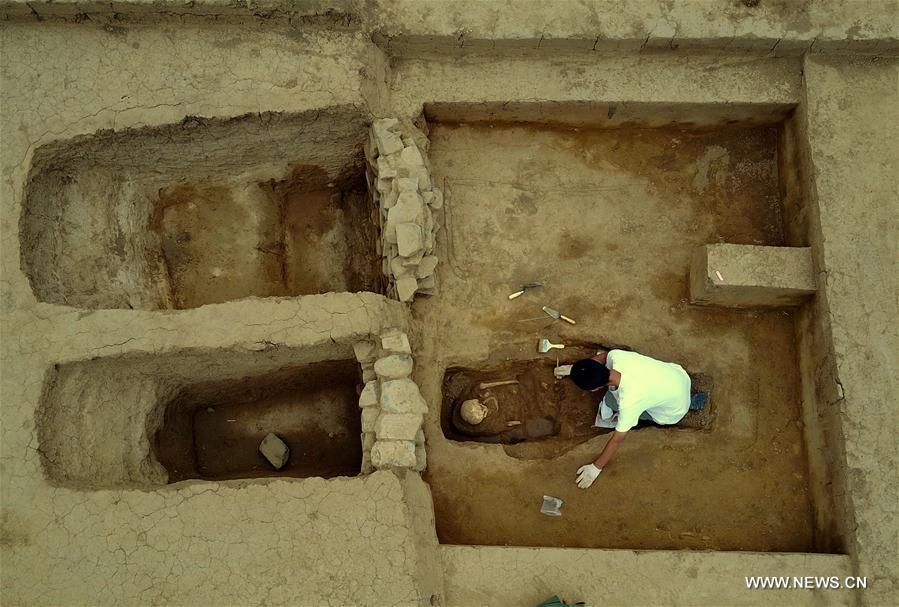 | An archaeologist works during an excavation of ancient tombs in Gujun village of Xingtang county, North China's Hebei province, June 12, 2017. The ancient tombs, believed to be built between the late Spring and Autumn Period (770 BC -476 BC) and the early Warring States Period (475 BC-221 BC), covers an area of 500,000 square meters. [Photo/Xinhua]
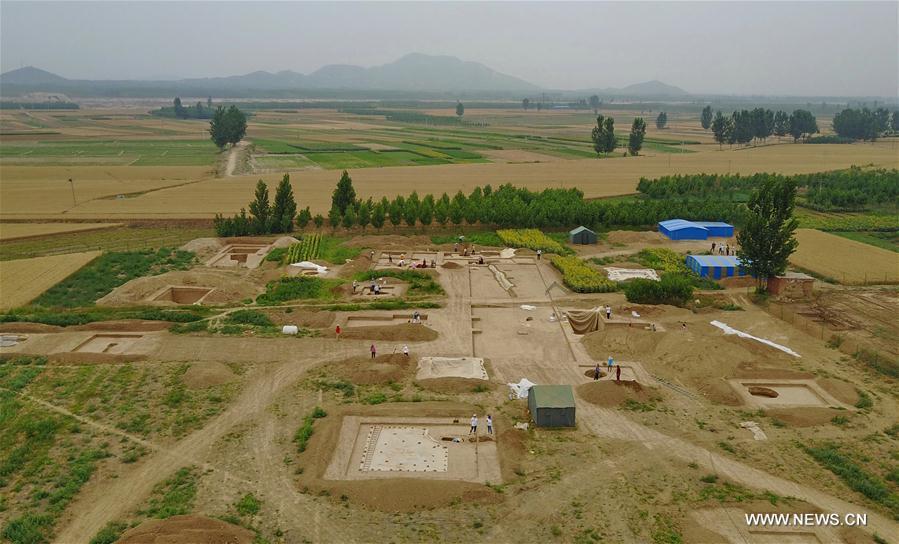 | Photo taken on June 12, 2017 shows an excavation of ancient tombs in Gujun village of Xingtang county, North China's Hebei province. The ancient tombs, believed to be built between the late Spring and Autumn Period (770 BC -476 BC) and the early Warring States Period (475 BC-221 BC), covers an area of 500,000 square meters. [Photo/Xinhua]
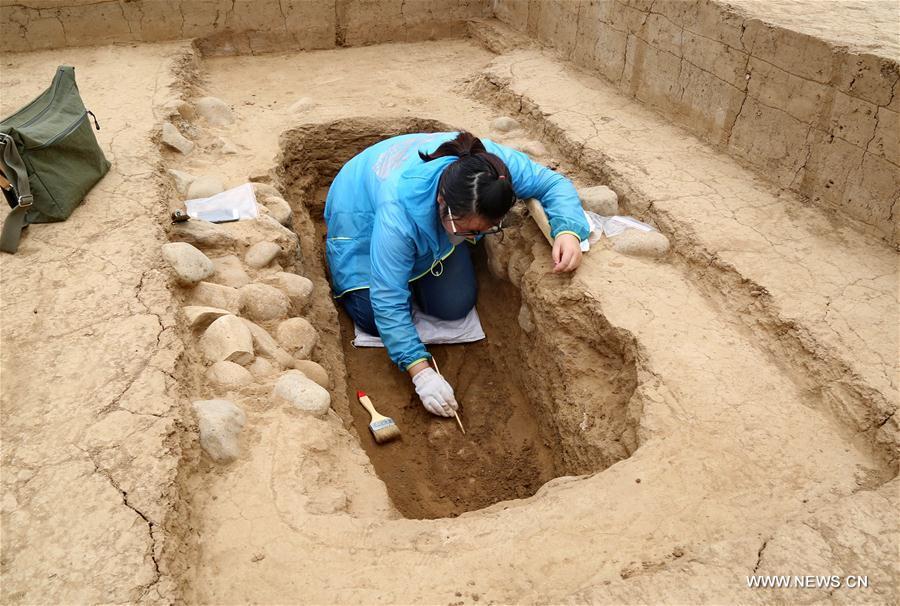 | An archaeologist works during an excavation of ancient tombs in Gujun village of Xingtang county, North China's Hebei province, June 12, 2017. The ancient tombs, believed to be built between the late Spring and Autumn Period (770 BC -476 BC) and the early Warring States Period (475 BC-221 BC), covers an area of 500,000 square meters. [Photo/Xinhua]
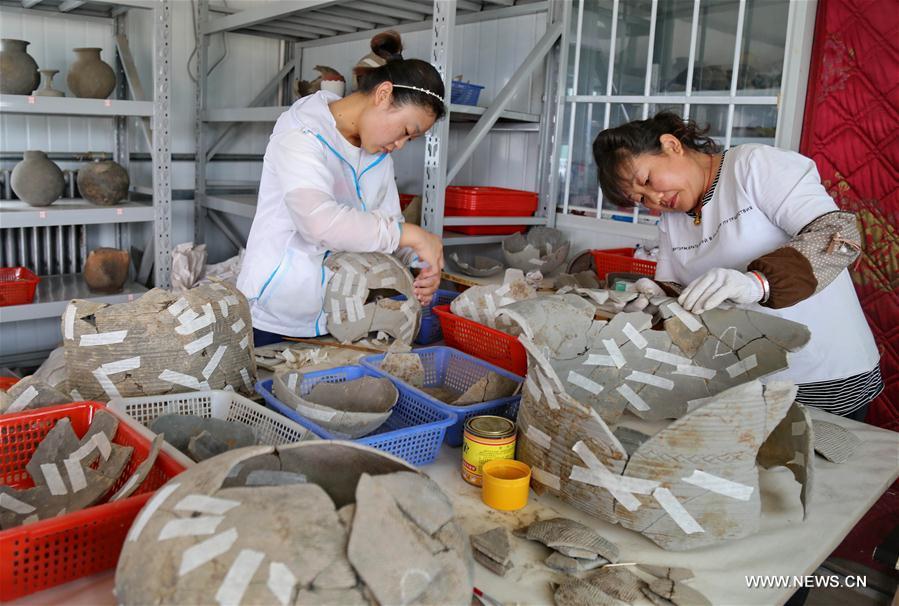 | Archaeologists restore pottery excavated from the ancient tombs in Gujun village of Xingtang county, North China's Hebei province, June 12, 2017. The ancient tombs, believed to be built between the late Spring and Autumn Period (770 BC -476 BC) and the early Warring States Period (475 BC-221 BC), covers an area of 500,000 square meters. [Photo/Xinhua]
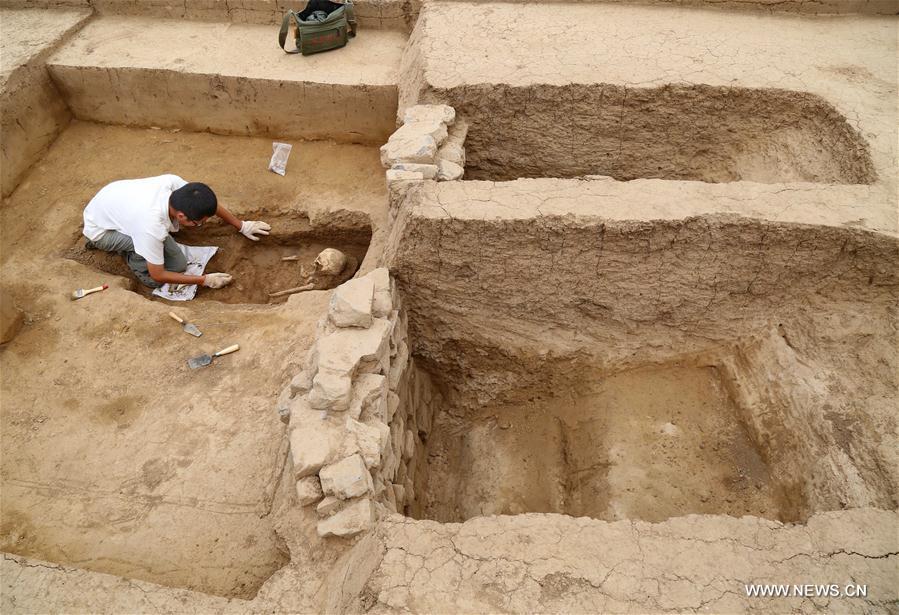 | An archaeologist works during an excavation of ancient tombs in Gujun village of Xingtang county, North China's Hebei province, June 12, 2017. The ancient tombs, believed to be built between the late Spring and Autumn Period (770 BC -476 BC) and the early Warring States Period (475 BC-221 BC), covers an area of 500,000 square meters. [Photo/Xinhua]
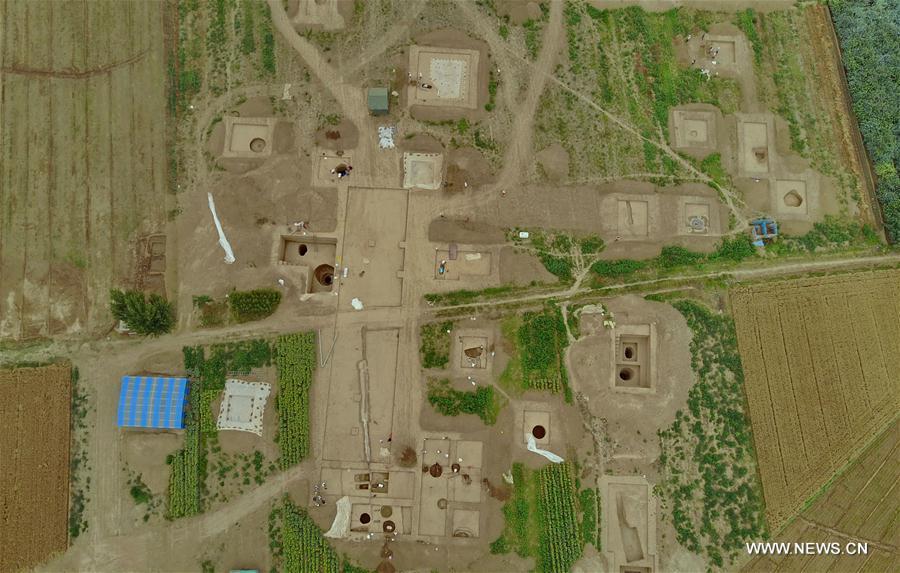 | Photo taken on June 12, 2017 shows an excavation of ancient tombs in Gujun village of Xingtang county, North China's Hebei province. The ancient tombs, believed to be built between the late Spring and Autumn Period (770 BC -476 BC) and the early Warring States Period (475 BC-221 BC), covers an area of 500,000 square meters. [Photo/Xinhua]
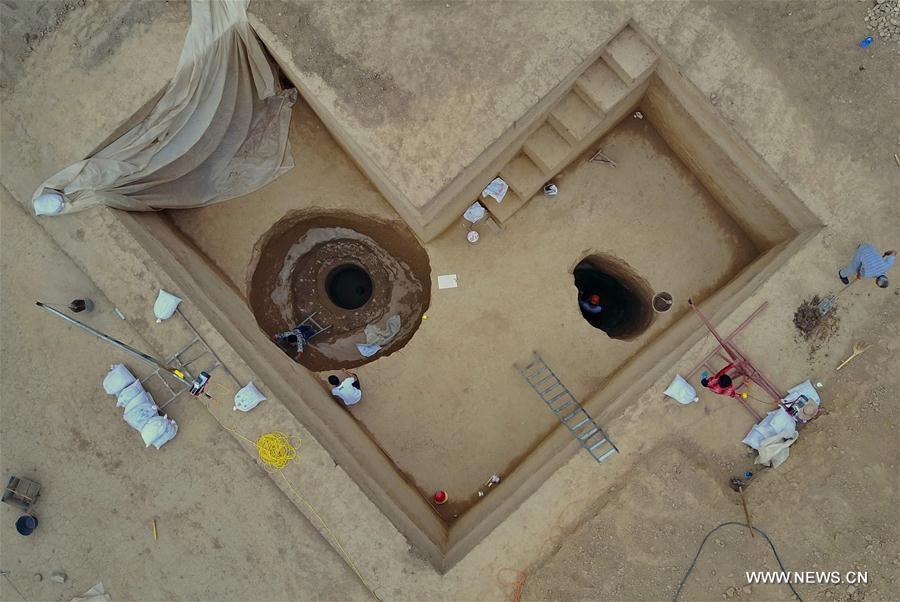 | An archaeologist shows a pottery unearthed from the ancient tombs in Gujun village of Xingtang county, North China's Hebei province, June 12, 2017. The ancient tombs, believed to be built between the late Spring and Autumn Period (770 BC -476 BC) and the early Warring States Period (475 BC-221 BC), covers an area of 500,000 square meters. [Photo/Xinhua]
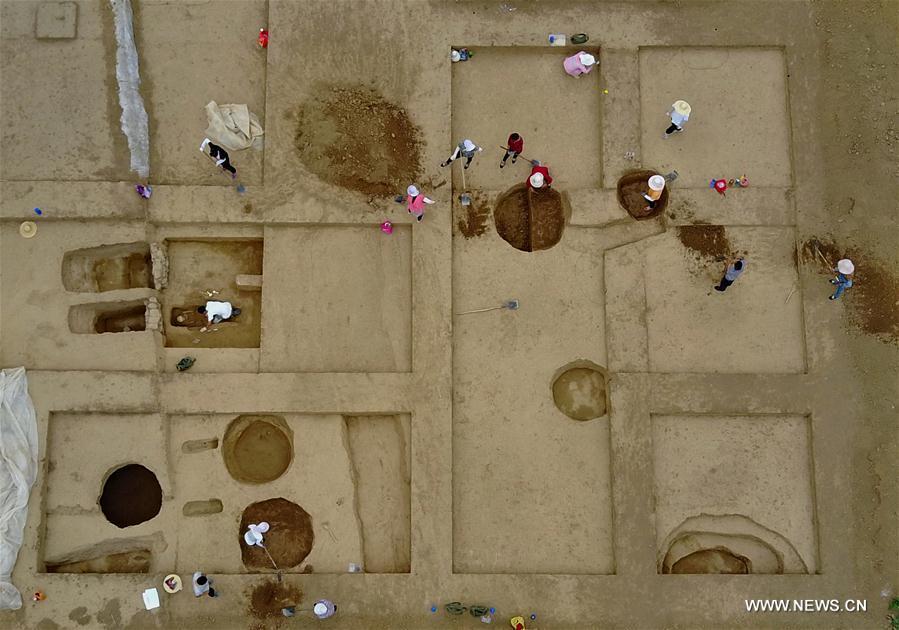 | An archaeologist shows a pottery unearthed from the ancient tombs in Gujun village of Xingtang county, North China's Hebei province, June 12, 2017. The ancient tombs, believed to be built between the late Spring and Autumn Period (770 BC -476 BC) and the early Warring States Period (475 BC-221 BC), covers an area of 500,000 square meters. [Photo/Xinhua]
|
|
|
|
|
|
|
|
|
|
